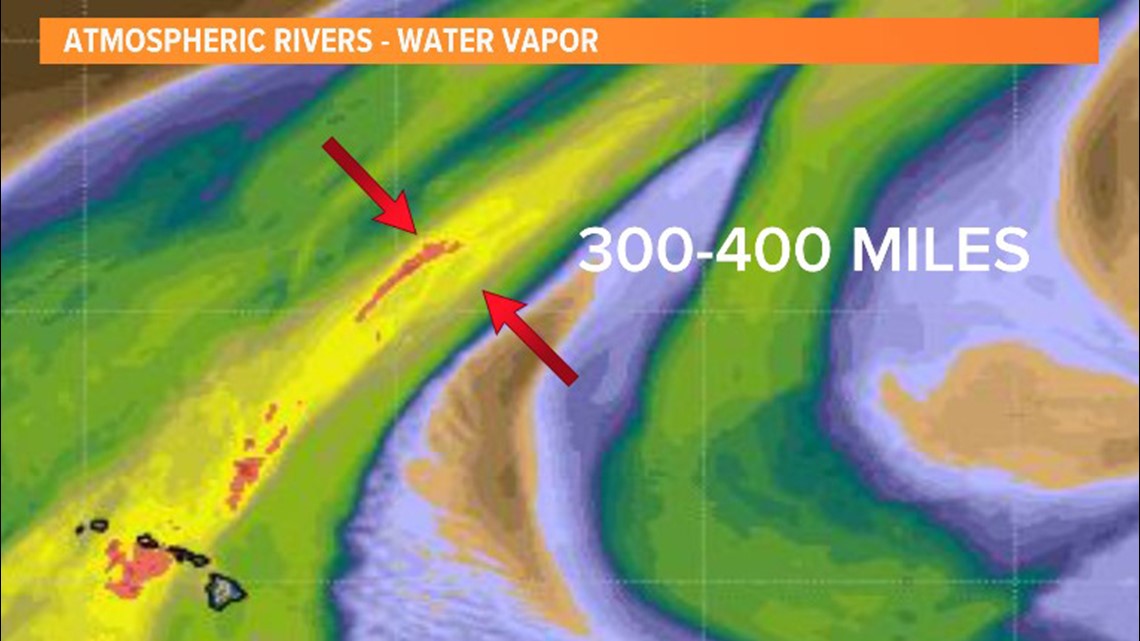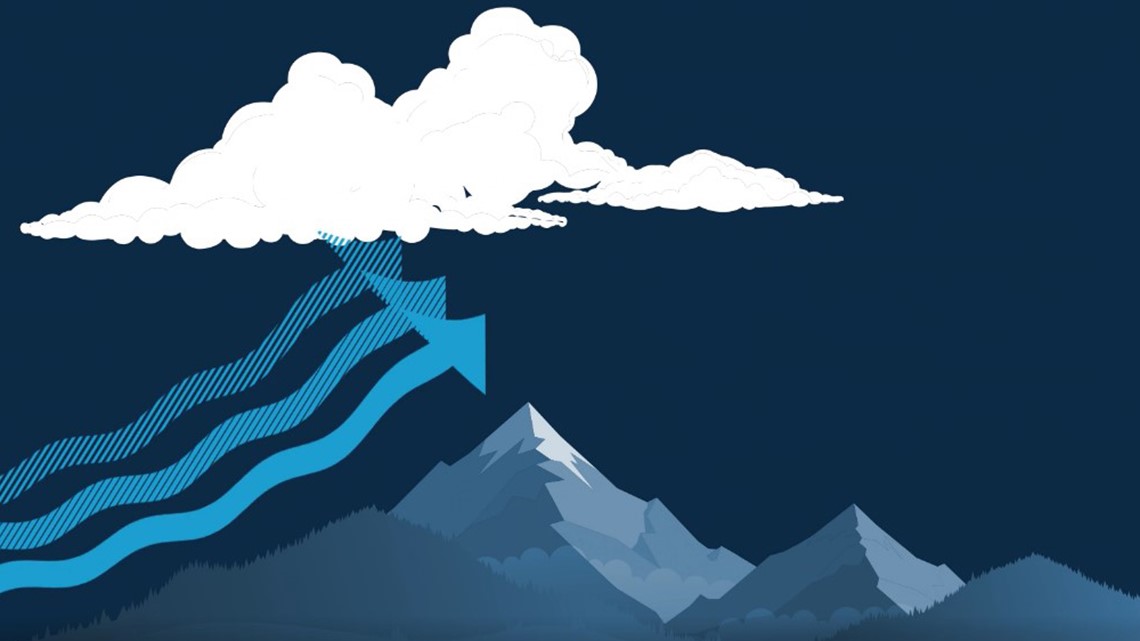SEATTLE — You've probably heard more and more about “atmospheric rivers” in western Washington over the winter, but it is not a new weather event for the Pacific Northwest.
An atmospheric river is a newer name for a familiar weather pattern called the “Pineapple Express.” Meteorologists use the term to describe a flow of moisture from areas just north of Hawaii directly into the Pacific Northwest that is usually accompanied by heavy rainfall and high snow levels.
But it turns out the “Pineapple Express” is just one type of atmospheric river.
Researchers in the 1990s determined narrow bands of moisture over the oceans constantly transport large amounts of water from the moisture-rich tropics to the mid-latitude areas where we live. The bands of moisture resembled normal rivers on satellite images, so researchers called them “atmospheric rivers.”
The plumes of water vapor are narrow, usually around 250-400 miles wide, but thousands of miles long. The rivers are low in the atmosphere and generally below 10,000 feet, which is far below where jetliners fly.


Despite being shallow and narrow, they carry an unbelievable amount of water. An average atmospheric river carries as much water in a day as the Mississippi River, which is roughly 400 billion gallons.
However, the largest atmospheric rivers could carry almost 10 trillion gallons of water per day. That is around the equivalent of two Amazon Rivers, the largest river in the world.
Most of this water remains as water vapor until it collides with land, like the west coast of the United States. Since the moisture is low in the atmosphere, the water is forced up and over our mountains. As the water is forced up, much of it is dropped on the west-facing slopes.


In stronger atmospheric rivers, this can be measured in feet of rain.
The most destructive atmospheric rivers stall over one area and persist for days. These weather events can cause massive flooding and widespread landslides. However, weaker atmospheric rivers are important to our water supply.
Between 30-50% of the rainfall on the West Coast comes from atmospheric rivers.

